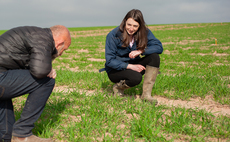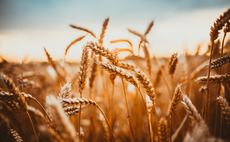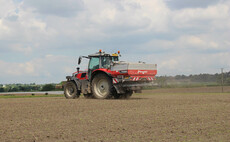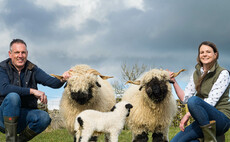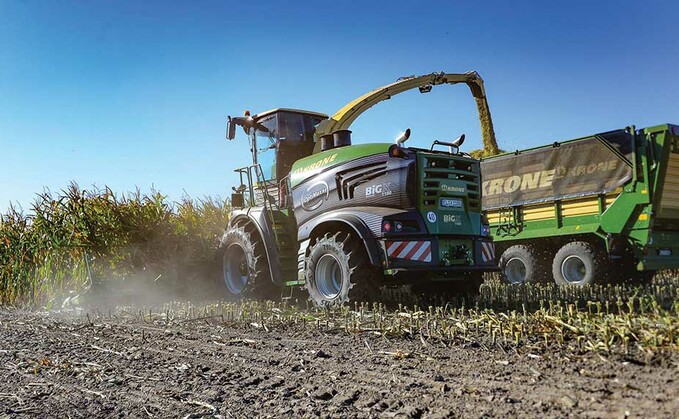
The arrival of a forager equipped with NIR sensing could hold the key to improving the efficiency of maize harvesting for one Yorkshire contractor. Geoff Ashcroft reports.
As the maize harvesting workload grew for Yorkshire contractor Oliver Mackintosh, so too did the need for more horsepower, to get the task completed within a fairly rigid timeframe.
Based at Huggin Farm, near Hatfield, Doncaster, Mr Mackintosh provides a contract harvesting service exclusively for an AD plant built on his farm. As the plant has recently expanded its gas-to-gas output, the 1,000ha workload to supply feedstock had grown to more than 1,400ha for the 2020 harvest.
Mr Mackintosh explains; "We found ourselves trading up last year, from a Krone Big X 770 to a Big X 1180, but keeping the 12-row EasyCollect header.
"With the AD plant's weighbridge open from 7am to 7pm, our working hours are very well defined. So that meant opting for more power, to prevent harvest running on and on into winter."
He says that the logic of choosing a forager with a 1,156hp V12 engine was to harvest as much of the maize as possible when the crop is ripe and at its best. "We get a proportion of our payment that is based on a scale that reflects dry matter content," he says. "34% is the target moisture and either side of this figure, our payments are adjusted to suit."
Oliver Mackintosh

"NIR sensing offers a useful level of yield data and dry matter content," says Oliver Mackintosh.
2
It stands to reasons then, that hitting the dry matter target requires a lot of planning and consideration. It is why the farm grows 12 different maize varieties, each one offering different characteristics to prevent the entire crop ripening simultaneously.
"If the crop does not ripen soon enough, the start of harvest is delayed," says Mr Mackintosh. "And as autumn moves on, we run the risk of frost damage, which can kill the crop prematurely - and that puts pressure on too, as the quality of a dead crop can only go one way.
"We need cellulose, but the later the crop is left, the more chance of it lignifying and then it becomes harder for the plant to digest," he says. "All these factors combined influence our selection of fire-power."
When it comes to determining dry matter content, crop is randomly sampled as it comes over the weighbridge, and processed on-site by the AD operator using a five-gram sample. There is margin for error with such a process, and it is also a practice that results in an average figure per field, says Mr Mackintosh. "If we are in a particularly poor part of a field and the load is sampled, we will get a distorted picture that does not reflect the true value of other parts of the field."
Forager specifications
- Model: Krone Big X 1180
- Power: 1,156hp Liebherr V12
- Transmission: Hydrostatic four-wheel drive
- Chopping unit: 48-blade biogas cylinder
- Chop length: 5mm target
- Technology: NIR sensing
3
"Depending on field size, there could be just two or three samples taken. And if a trailer driver forgets to tell the weighbridge operator that we have changed fields, the validity of the data becomes questionable."
But there is now an alternative form of sampling, provided by technology that has arrived on the OptiMaize-spec Big X 1180 forager being used by the Mackintosh family.
For the first time, Mr Mackintosh now has the benefit of an optional near-infrared sensor (NIR), which could open up additional possibilities for the operation. "There is a lot of additional technology on this forager, that we are keen to make the most of," he says. "On-board telematics and field-by-field data recording is impressive, and that means we no longer have to remember specifics - it is all recorded and stored in the machine's in-cab terminal as we harvest the crop."
NIR sensing is built into the forager's discharge chute, to provide moisture and content measurement of the crop as it is blown into the trailer. Krone uses an AgriNIR online sensor, which can provide data on dry matter, starch, raw protein crude ash, crude fat, acid detergent fibre and neutral detergent fibre.
Spout sensor

NIR sensor is located in the spout, to scan the crop on its way to the trailer.
4
"We are currently focussed on the dry matter content," says Mr Mackintosh. "From the field records we have collected this autumn, there is now an opportunity this winter to compare and contrast the forager's data with that collated at the weighbridge."
He says initial analysis of his own 15 fields reveals less variation than that derived by weighbridge sampling. "From the few fields I have looked at, there is a pattern," he says. "Our data follows the weighbridge samples, but the changes are smaller and less dramatic."
He says the German test institute DLG has found that when it tested the system, 94% of samples were within 2% accuracy of laboratory samples.
"Are we better to have a more consistent average over a greater area, or greater accuracy over fewer tests," he asks. "If you look at grid sampling for soil analysis, the process of increasing the number of samples does create a more accurate picture, which relies on less guess-work to fill in the unsampled areas.
AutoScan
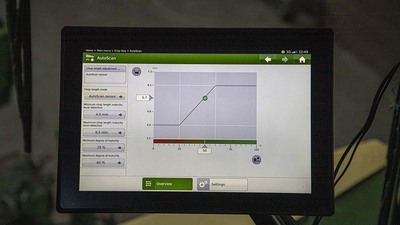
AutoScan chop length control system can react to changes in crop maturity.
5
"The challenge for us will be to work more closely with AD operators to generate a more consistent picture of dry matter and crop quality, with the help of NIR sensing," he says. "Longer term, the data will be helpful to influence variety choices and harvesting dates."
Data has an increasingly important role to play in improving operational efficiency. And a look at the forager's total counter statistics has shown that the 2020 season saw the engine hours reach 426 hours and two minutes, of which, 297 hours and 20 minutes were attributed to the chopping cylinder, while the header recorded 246 hours and 18 minutes. Area harvested amounted to 1,422.81ha while fuel consumption was 40,832 litres.
The forager also covered a total distance on 3,016.5km, of which 1,114km was recorded on-road. He says that field size and location still impacts on forager performance, and 40 hectares/day is the average for this team. Though performance data is leading the business to look at how it operates.
Field data example
- Customer: WJ & LA Mackintosh
- Field: Dirtness 01
- Size: 13.73ha
- Engine hours: 3h 02m
- Drum hours: 2h 45m
- Header hours: 2h 14m
- Fuel used: 428 litres
- Fuel/area: 31.21 litres/ha
- Fuel/DM: 2.46 litres/tonne
- DM: 30.6%
- DM/ha: 12.7 tonnes
- In-field travel: 16.5km
6
"The information we now have at our fingertips is staggering," explains Mr Mackintosh. "This data can help to highlight areas where we can make small changes and get useful gains in the way we operate as a whole. That could include waiting times, trailer journeys, and even the way we harvest fields to reduce non-productive time."
"We run a fleet of eight trailers and, depending on where we are in relation to the plant, we want different start times from members of the team to ensure the first load arrives at the plant as soon as the weighbridge opens, at 7am," he says. "Logistics are very important, to ensure a consistent flow of crop during harvesting. We do not want the forager waiting, nor do we want a load of trailers sitting around waiting."
When it comes to chopping performance, the team makes the most of technology, to maintain the length as close to 5mm as possible. "We use Krone's AutoScan sensor which is located in the header to control intake speed," he says.
"We have a tolerance on the system, with upper and lower limits in a range from 4-6.5mm depending on crop maturity. This prevents over- or under-chopping, but also maintains great surface area to promote microbial activity in the clamp."
Verdict

Compared to the Big X 770, Oliver Mackintosh says the 1180 model is in a different league.
"It is not all down to power," he says.
"There are many improvements on this machine to make it much more operator-friendly. My only complaint is fuel storage - there is not enough capacity to run for a full day without topping up and that eats into output."

















